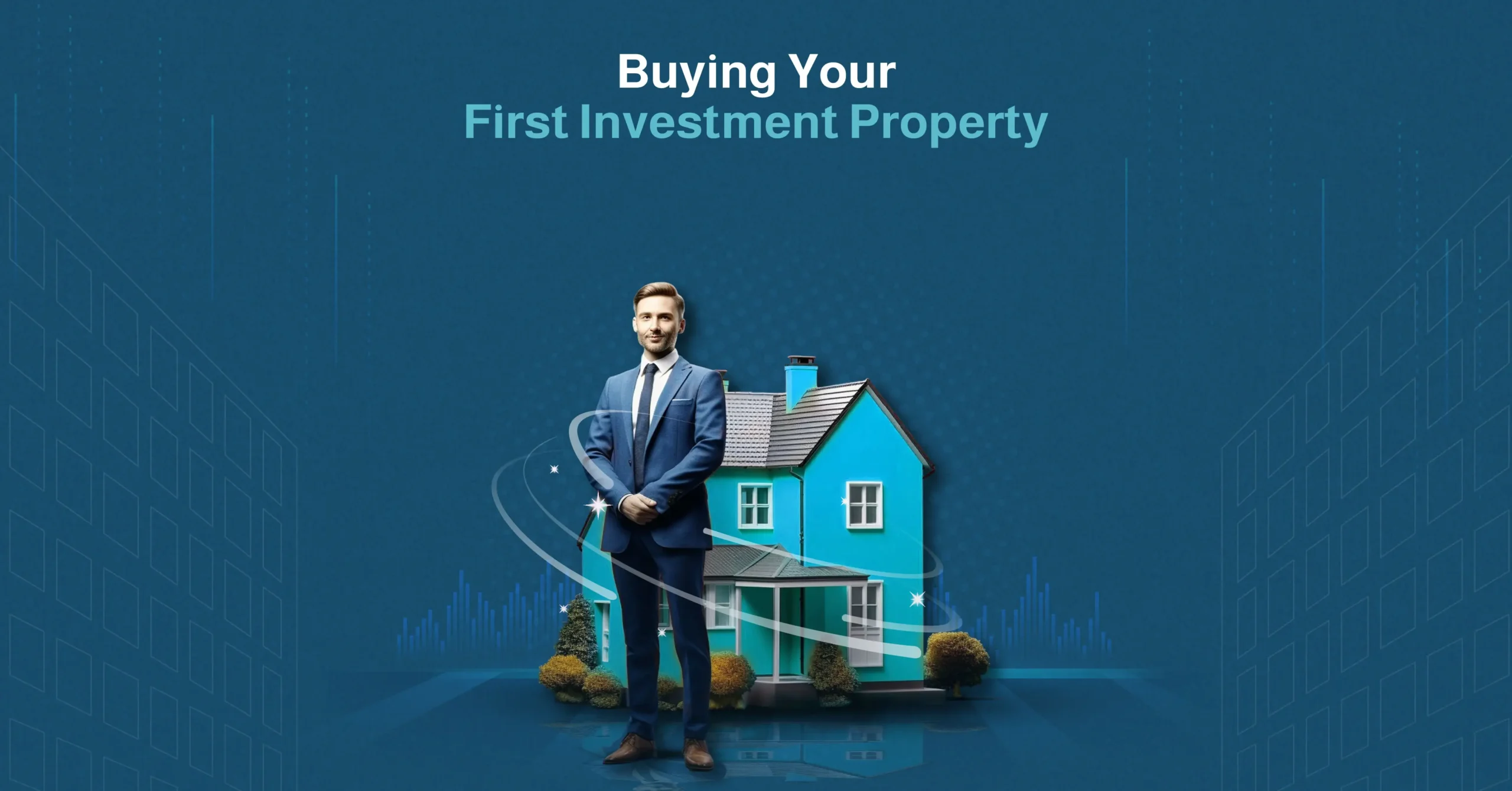The excitement of buying your first investment property is like no other. You start with dreams of superb properties, with sprawling living areas spilling over into incredible views, and you can almost feel your bank account grow. Well, if you are looking to make money through real estate, the investment landscape is more accessible than it has ever been, but many first-time investors are still unsure of how to get going. We have created this guide to help simplify the process, provide clarity, and build your confidence in building your portfolio. No matter what your needs are, rental income, portfolio diversification, additional income, or long-term appreciation. We will walk you through from research, financing, legal preparation, and even investment alternatives.
What You Need to Know Before Buying Your First Investment Property
It is important that before putting any capital down that you have a good understanding of your goals, and know exactly what it is you are looking for it is a steady income from a rental property, or is it long-term appreciation. Understanding your goals will provide clarity and help adjust your approach. Now it’s time to get your finances in order, making sure you have minimal personal debt, a healthy emergency fund, and a good idea of your borrowing potential. Then comes research, you will need to conduct market research, looking into rental yields, vacancy rates, as well as upcoming infrastructure developments. The last step is mental, making sure you approach this decision from a business mindset, not an emotional one. This is not you buying your dream home, but rather investing in an asset that needs to see returns.
How to Choose the Right Property and Location for Strong Rental Returns
In the words of Harold Samuel, “Location, location, location.” A location can make or break your returns. Some factors to consider include areas with strong rental demands, good transport links, and a stable local economy. University towns, urban centers, or up-and-coming suburbs are often popular. You should opt for low-maintenance properties with tenant-friendly features such as functional layouts, secure parking, and modern kitchens. Tools such as gross rental yields and price-to-rent ratios are useful when buying your first investment property. Flood-prone areas or slow population growth should be big red flags. We have put together a quick list for you to reference.
| Feature | Good Sign | Red Flag |
| Location | Near public transport, schools, shops | Isolated, poor infrastructure |
| Property Type | Low-maintenance, popular with renters | High upkeep, niche appeal |
| Rental Yield | 6% or higher (varies according to market) | Low or declining yields |
| Market Trends | Growth in population and employment | Shrinking or stagnant market |
| Amenities | Secure parking, modern kitchen, reliable utilities | Outdated layout, safety issues |
Financing Options When Buying Your First Investment Property
The majority of first-time investors will need to rely on financing. Banks are likely to require a 15-25% down payment on the property, along with a strong credit score and proof of income. Before you even apply for credit, try to reduce your debt, increase your savings, and get pre-approval. Then you need to consider the interest rates, loan features, and repayment flexibility. If you are unable to go this route, look into co-investing with a partner or using home equity from your primary residence. There are several financing options to consider when buying your first investment property, each with pros and cons.
| Financing Option | Pros | Cons |
| Bank Mortgage | Widely available, structured payments | Requires good credit and a large deposit |
| Co-Investing | Shares cost and risks | Shared decision making, legal agreement needed. |
| Home Equity Loan | Leverages existing property value | Risk of losing primary home if repayment fails |
| Islamic Financing | Sharia-compliant, profit-sharing structure | May have higher fees or stricter requirements |
| Fractional Platforms | Low entry cost, no management hassle | No physical control, income may vary. |
Legal and Tax Considerations for First-Time Property Investors in Saudi Arabia
If you are planning on buying your first investment property in Saudi Arabia, it is of vital importance, before you commit, that you understand the legal and tax landscape. While the whole process is a little more transparent than it once was, there are still key steps you must take.
Ejar Registration
All rental agreements must be registered through the Ministry of Housing’s Ejar platform. This is done to protect both the landlord and the tenant by standardizing the lease terms and ensuring the full legality of the contract.
Ownership Eligibility
For Saudi nationals and residents, buying your first investment property is fairly straightforward, but for foreigners, it is a little trickier. For foreign investors, there are specific ownership rules with which they must comply; these include approval from relevant authorities or restrictions on purchase in certain zones. We would recommend checking eligibility early in the process to avoid disappointment later.
Taxes and Fees
Rather than income tax, Saudi Arabia may apply a 5% VAT to commercial properties or short-term leases. If you are buying, it is a wise idea to set aside capital to cover the title deed transfer fees, notary charges, and agent commission.
Landlord obligations
Owning a rental property means you are legally responsible for major structural maintenance, safety compliance, as well as timely dispute resolution, with fixed-term leases being the standard and evictions requiring formal justification.
If you are investing from abroad or are unsure, it is a good idea to consult a real estate lawyer or local advisor. For some investors, platforms might be an easier way to invest without dealing with the hands-on requirements of a sole-owned property. This is where Gamma Assets shines.
Why First-Time Buyers Consider Platforms Like Gamma Assets for Easier Entry
Buying a property can often come with high upfront costs as well as many hidden costs, long-term commitments, and the responsibility of managing tenants and property maintenance, which can feel more like a barrier to many new investors rather than an opportunity. Perhaps this isn’t the best place to start, and new investors could consider a smaller investment?
Introducing fractional property investment platforms. You don’t need to save for years to get started; you can start with a small amount and build as your capital grows. Platforms such as Gamma Assets will allow you to invest in real estate-backed assets, which means you don’t need to buy and manage an entire property yourself. Instead you can start with a small amount and still receive the benefits of real estate investing. Gamma Assets can get you started from as little as 500 SAR/USD, with minimal effort from your side.
Each investor has a different investment plan; for some, fractional ownership is just a stepping stone. Helping them get a foot in the door and learning how real estate investing works in a safe, controlled manner. For others, it is a method to diversify their portfolio, complementing more traditional investments, adding flexibility, and reducing risks.
Having an alternative to the high-costing and regulation-heavy property market can make all the difference for investors, both new and seasoned. For those testing the waters, looking for a little additional income, and for those serious about diversification without the administrative rigmarole. Gamma Assets offers a modern way to participate in real estate investing on your own terms.
Buying your first investment property is a huge milestone, and if it is worth doing, it requires patience and planning. You are not expected to know everything your first time; you will have the help of professionals to guide you, articles you can read, and the next property will be easier. What we would say is that the most important thing is setting clear goals, doing your research, and due diligence, and staying realistic about what you can manage.
Every step you take, every document you read, and all your research is going to make you more confident in the world of real estate investment. If you feel that buying and managing your first investment property is too much for right now, you may want to consider starting a little smaller with a platform like Gamma Assets. Gamma Assets will allow you to begin investing with less stress, whether you are looking to dip your toes in the water or diversify your traditional assets with something a little more modern. This alternative shows that investing is not just for the wealthy anymore, but rather for anyone interested in growing their income, building long-term stability. Buying your first investment property in 2025 may just be more achievable than you had first thought; it just requires the right tools and guidance.
You can start investing now from the Gamma Asset Investment Platform
FAQ Section
How much money do I need to buy my first investment property?
You would typically need a 15-25% down payment, plus extra for legal fees, taxes, and maintenance. In Saudi Arabia, you should aim to save at least 20% of the property’s value. If that is too steep, consider starting with an alternative option, such as buying your first investment property through Gamma Assets. Gamma Assets lets you start investing with either 500 SAR or USD.
Is it better to invest in apartments or houses as a beginner?
Apartments are often cheaper and easier to manage than standalone homes. This is appealing for first-time investors, but houses offer higher long-term returns, but usually come with more maintenance. When buying your first investment property, consider your budget, time, and comfort with risk.
What should I know about rental laws in Saudi Arabia?
Rental contracts must be registered through the Ejar platform. Landlords are responsible for major maintenance, and fixed-term leases are common. Before purchasing your first investment property, research local laws to understand your responsibilities and avoid any unexpected surprises.













